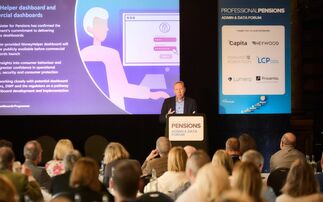
Kim Gubler: The government needs to remember it is the administrators who are going to implement many of its new policies
It’s great chancellor Rachel Reeves has announced the phased pension review so soon into the new government term.
At the moment, this is concentrating on investment for growth to bring benefits to saver outcomes and the economy. We know government has an eye on value for money (VfM) and small pots, but the chancellor's reference to fees shouldn't be ignored – with Reeves vowing to tackle the £2bn spent on fees by local government for their pension schemes.
Reeves and Emma Reynolds – our first ever joint HM Treasury and Department for Work and Pensions minister for pensions – have already started off "intensive industry engagement" with a round table on 22 July.
So… all looks great. We have a government saying it's committed to engaging with the industry, what could possibly go wrong?
Collaboration vs engagement
A quick Google search on the two terms tells us collaboration is the process of ‘working with others to achieve a common goal', while engagement is how an organisation ‘involves people who may be affected by the decisions made, or can influence how a decision is carried out'[1].
Note the difference. In the former, you work together. In the latter, someone listens to what you have to say and decides whether to take your views into account. So, there's a big difference between engagement and collaboration, and it is collaboration we need to deliver on our current priorities, let alone any future structural changes.
Without collaboration there will be a disconnect between policy intent and actual outcomes. Even a much-needed structural change needs systems to be updated, processes to be changed, messages to be adapted. And the government needs to remember who is going to implement many of its new policies – the administrators.
The Pensions Administration Standards Association (PASA) is extremely well placed to bring together administration strategists, practitioners and subject matter experts to find solutions which work without excessive frictional costs.
By collaborating with administrators – rather than simply those with the loudest voice – government can ensure the infrastructure supporting the re-energised pension system delivers on its promises.
Delivering dashboards
While attention's focused on the blue sky thinking of how to build UK investment potential, and government is looking at an even broader VfM scope as well as picking up on the job of consolidating small DC pots, we mustn't forget our existing promise to collaborate to deliver pension dashboards.
All schemes need to be ready to connect to pensions dashboards by their respective date… some in less than nine months. Indeed, dashboards are a perfect example of the need for very close collaboration between government, regulators and industry. Administrators want to deliver the best saver experience possible, and they know how this can be done. But individually, they're already stretched with a long-standing capacity crunch.
PASA members come from across the industry, but they have in common a deep understanding of administering different types of workplace pensions. While data supply and display standards are being mandated, industry has to deliver them and pension savers need to understand what they're seeing.
PASA is representing industry in collaborations with government and regulators. We already have strong relationships with the Pensions Dashboards Programme (PDP) team at the Money & Pensions Service (MaPS) and the industry engagement team at the Pensions Regulator (TPR). But we need to build on this. Administrators know they'll be dealing with the majority of queries which will inevitably flow from people looking at their pensions all in one place for the first time. And they know these queries will need to be managed alongside existing work.
The real test of this extremely close collaboration on dashboards will come from April 2025 onwards with the essential end-to-end pre-launch consumer testing. If collaboration is downgraded to ‘engagement' as we near the first connections the risks are high.
Kim Gubler is chair of the Pensions Administration Standards Association
This article was published as part of Professional Pensions' PP Pensions Commission – which is bringing together industry opinion and ideas on the future of pensions to send to the new government
[1] Media & communications, Nazila Vali & Rabayl Mirza Business Call to Action, 1 November 2019








